A wide application range
From raw data, the MDS suite allows constructing models (i.e. static of dynamical function) simple, accurate and interpretable, with a limited computational cost.
The methods are generic and apply to all types of problems: structures, electronics, magnetic, fluids, acoustic, climate, medical...
Contact-us for more details.

Some examples

Simplified model construction from a data tensor
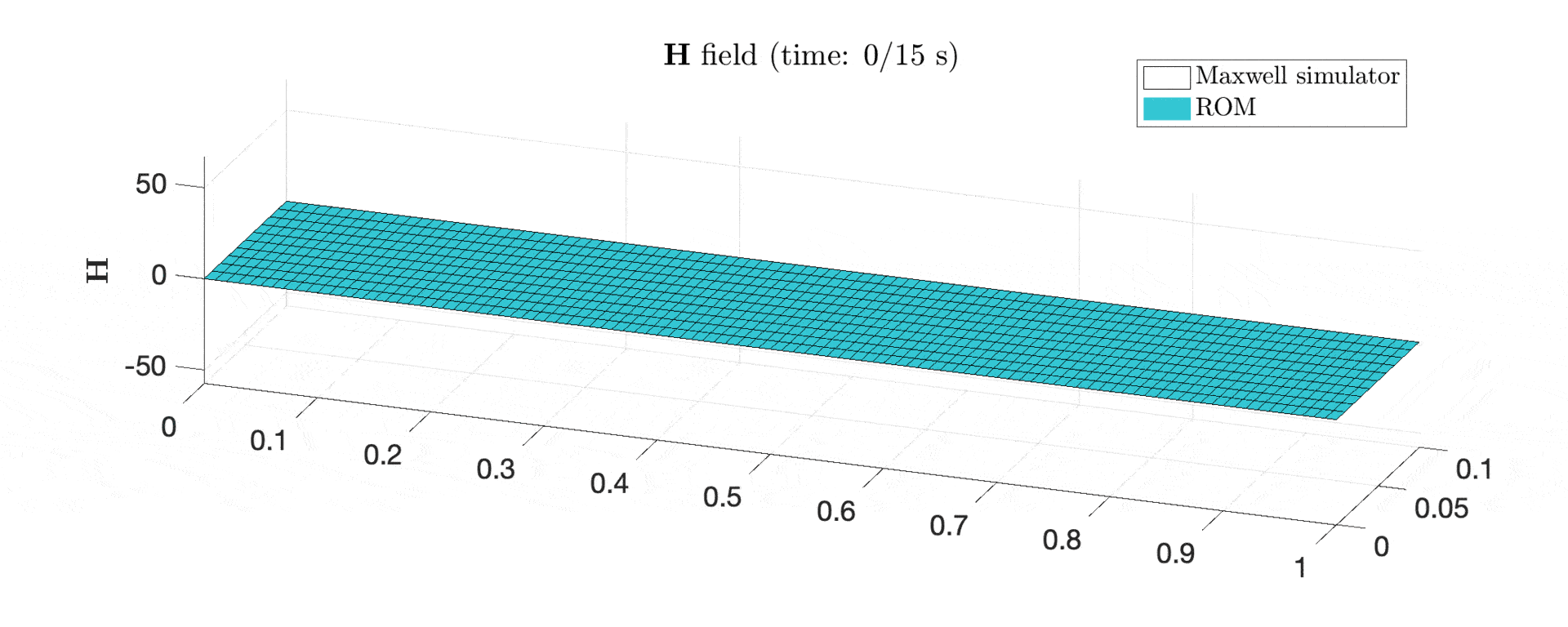
Construction of a simplified model of a waveguide simulator
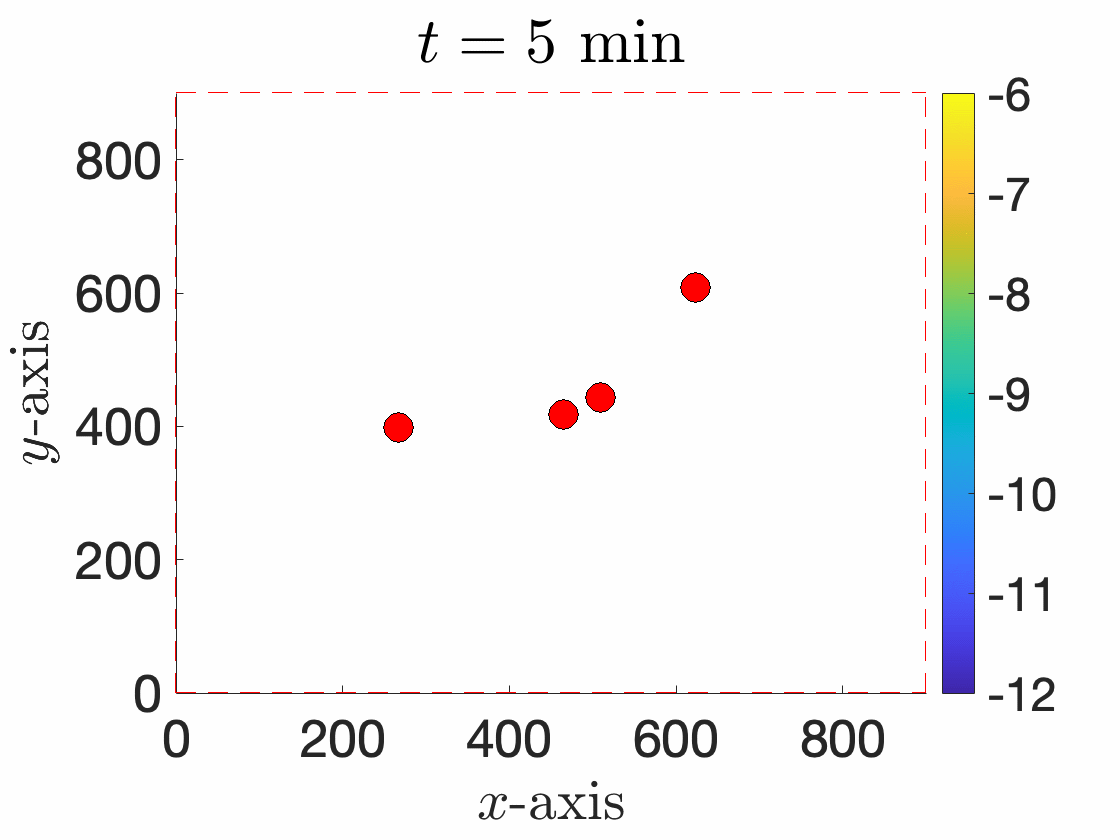
Approximation of a pollutant dispersion simulator
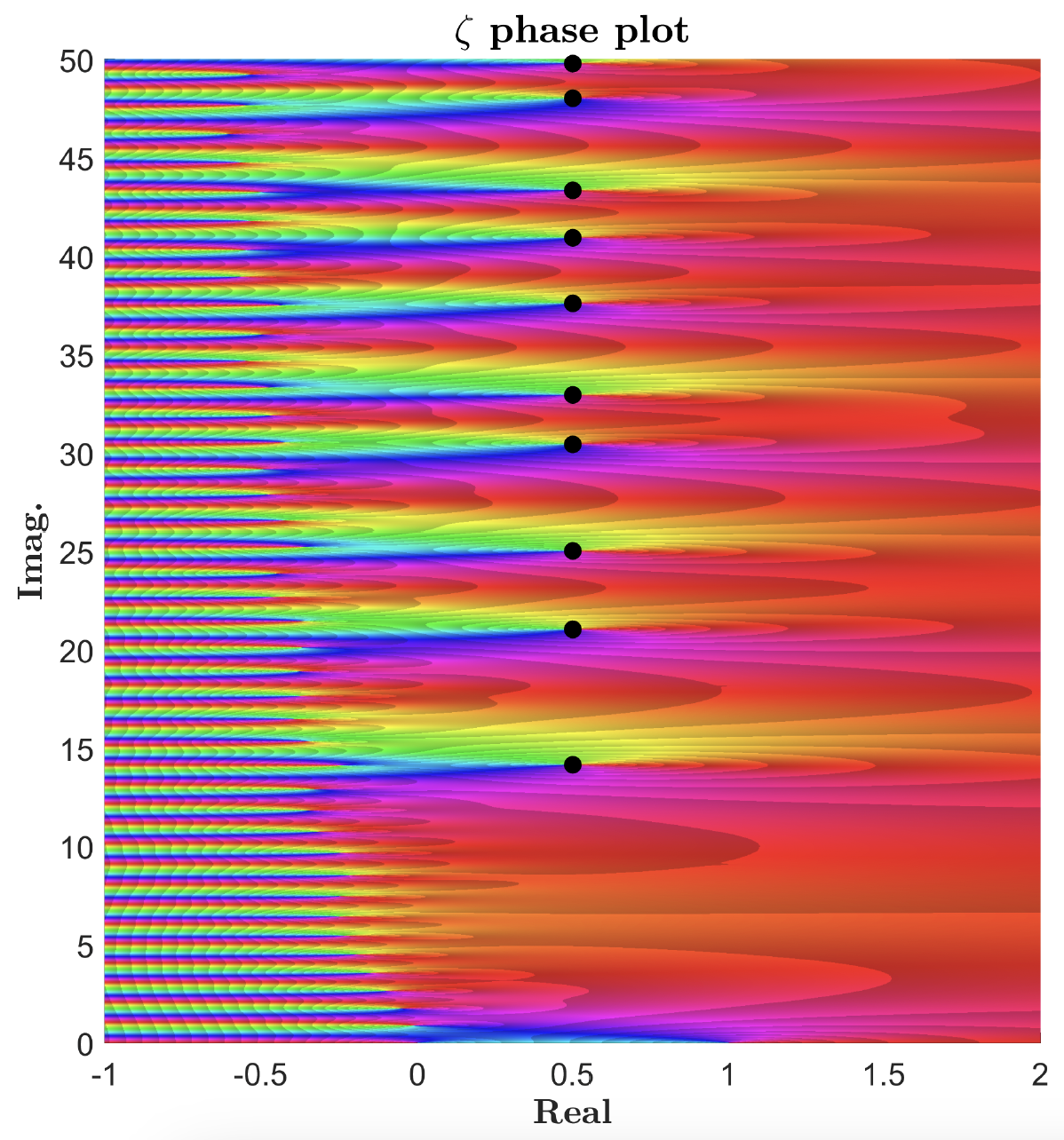
Riemann "zeta" function zeros approximation
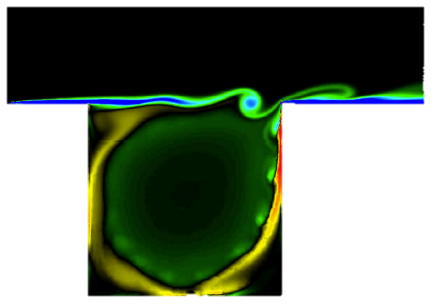
Model order reduction of a fluid mechanical dynamical
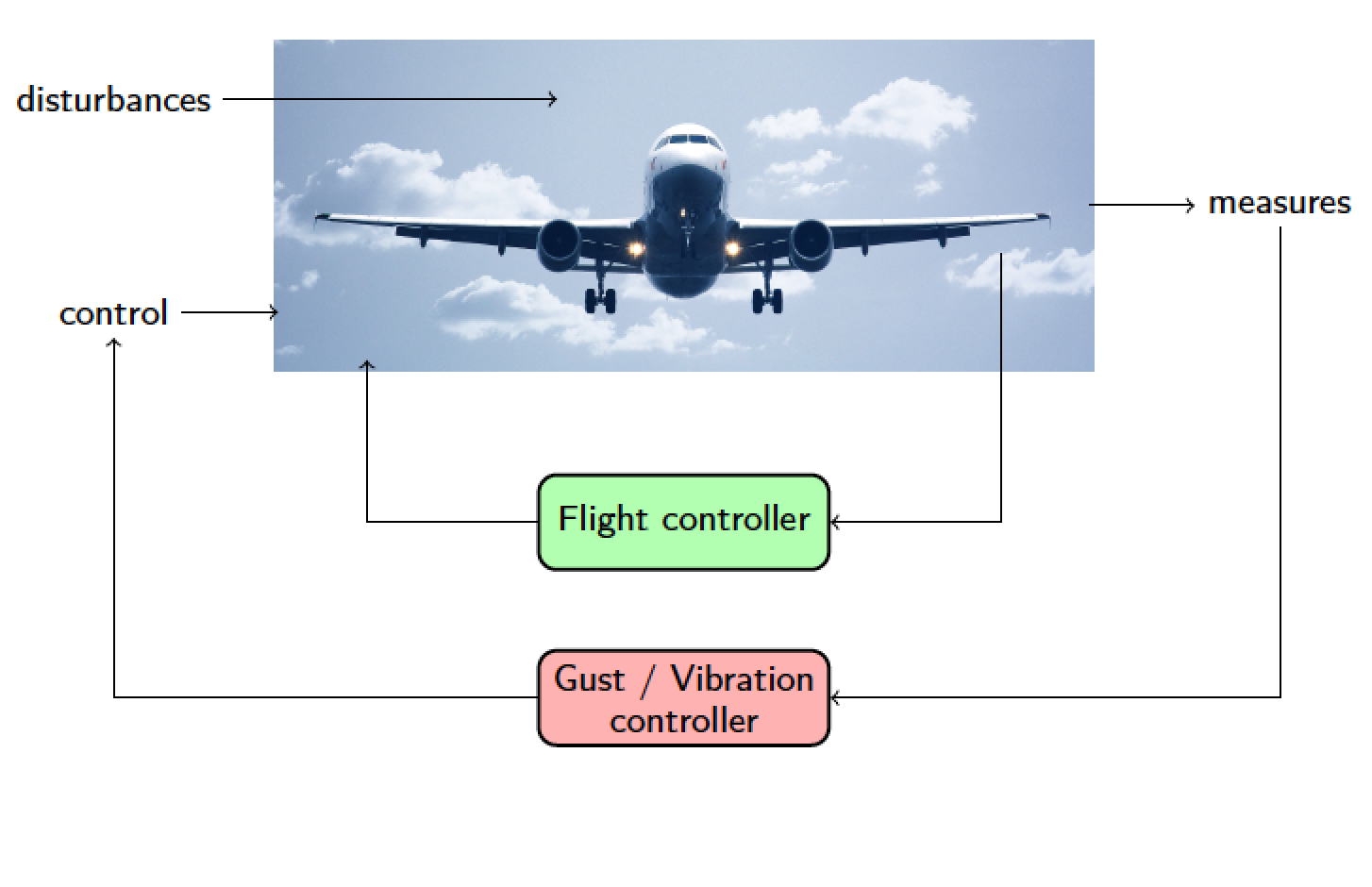
Civilian aircraft frequency limited model reduction, for vibration control
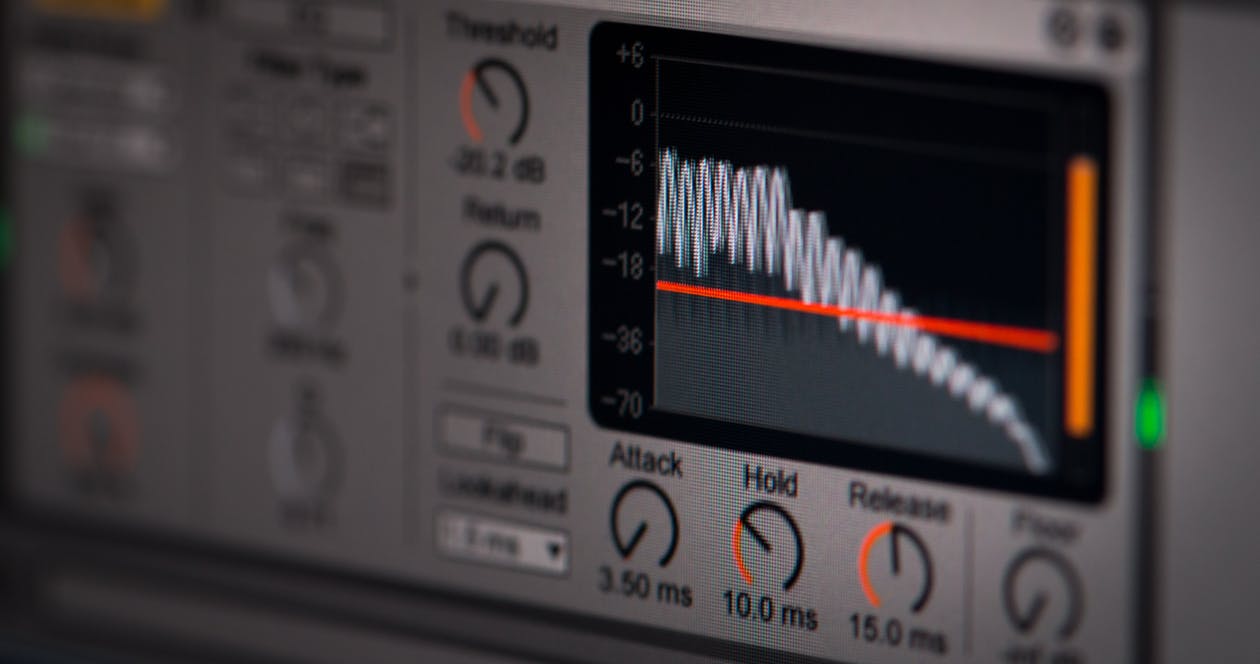
Model construction from ground vibration tests

Approximation of an hydro-electrical simulator
Tensor-based surrogate model construction
Engineers and practitionners are regularly faced to multivariate problems. This is specifically the case when the quantity of interest (denoted "QoI"), observed or measured depends on many variables or parameters "x1,x2,...xn" ("n" being potentially elevated). This configuration is regularly encountered when the measurements made on the system, the software or the experimental setup, depends on parameters (e.g. geometric shape, temperature, type of meterial, parametrisation choice, etc.) In this setting, it is largely admitted to measure the "QoI" for different combinations of the input variables. What then appears is a data tensor (or n-dimensional table), being the generalisation of the 1-dimensional (vector) and 2-dimensional (matrices).
The tensor construction provides a caracterisation of the system at a finite number of points. However, for optimisation, simulation or simply for physical understanding, possessing a surrogate model is an advantage.
The MDS suite can be used to approximate these tensors by an accurate, interpretable and with limited complexity model. The latter can then be used to evaluate the "QoI" for other configurations outside the available data.
Such a surrogate may also be used to share a software or system's behaviour with partners without providing the "confidential" one.
The below figure presents the performances in term of computation time as a function of the tensor size on the disk, for different approximation methods (MLP, KAN, AAA), demonstrating the superiority in the scalability of the MDS suite [arXiv] [SIAM Review].
[arXiv] A.C. Antoulas, I-V. Gosea, C. Poussot-Vassal and P. Vuillemin, "Tensor-based multivariate function approximation: methods benchmarking and comparison".
[SIAM Review] A.C. Antoulas, I-V. Gosea and C. Poussot-Vassal, "On the Loewner framework, the Kolmogorov superposition theorem, and the curse of dimensionality", in SIAM Review (Research Spotlight), Vol. 67(4), pp. 737-770, November 2025.
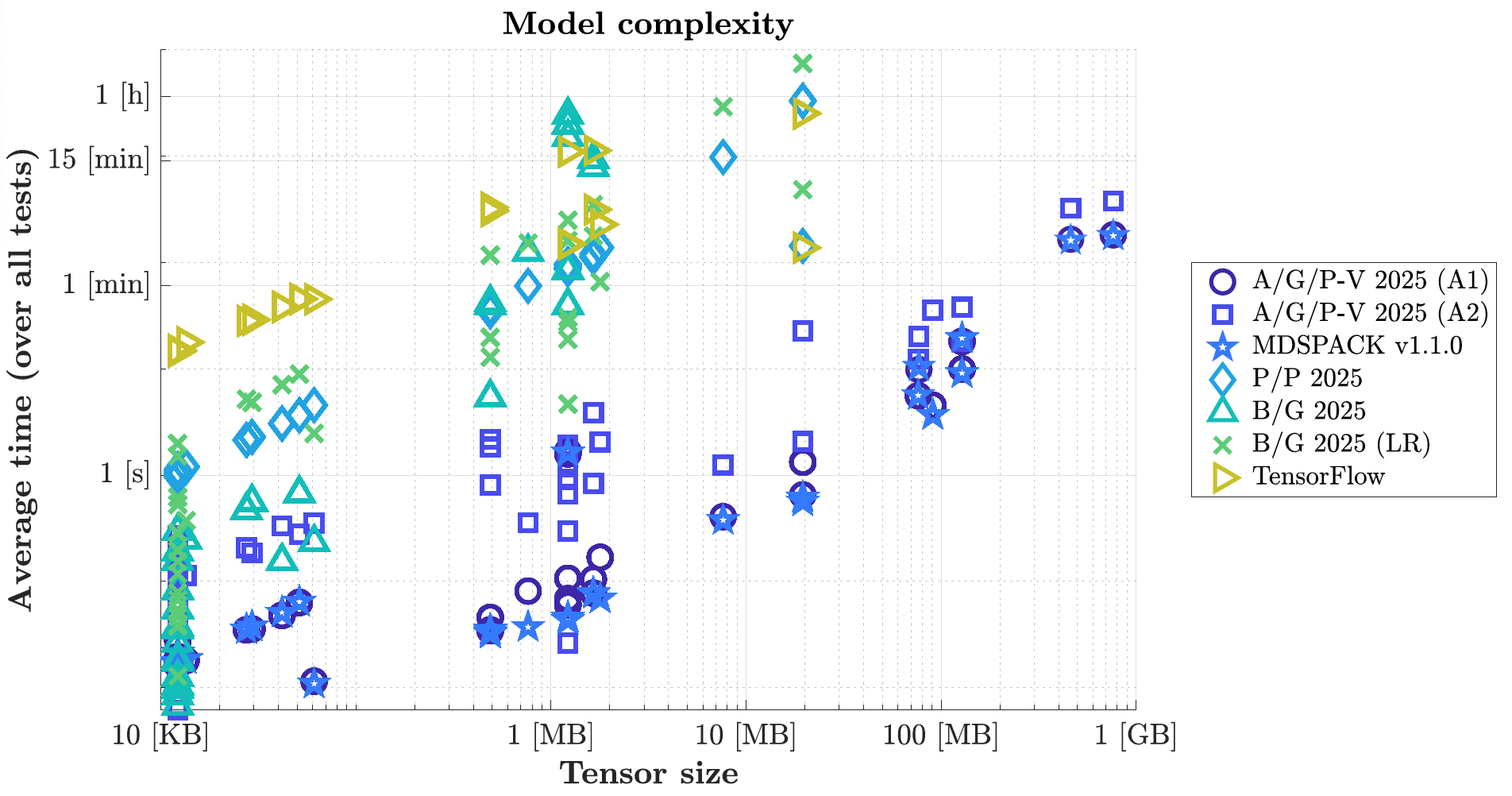

Engineers and researchers use the MDS suite to approximate tensor data
Construction of a simplified model of a waveguide simulator
Antenna, cable, and generally electronic system manufacturers are often faced with electromagnetic phenomena governed by complex equations, particularly Maxwell's equations. During the pre-design phases, expert software is commonly used to simulate these phenomena. These tools allow the simulation of magnetic fields, antennas, propagation, radar signatures, etc. In practice, for purposes of analysis, optimization, and understanding, it is often necessary to modify the parameters of these systems: geometric shape, material types, etc.
However, each change in configuration or external signal requires re-running the simulation, the computational cost of which is extremely high, limiting its intensive use (for example, in an optimization process).
The MDS suite can be used to approximate these simulators with a simpler dynamical model. This model can then be used by engineers to simulate different conditions, optimize parameters, etc.
The figure below shows the result of a simulation of a waveguide composed of three regions with different permittivities, in response to an electric wave injected from the left. The figure compares the magnetic (H, top) and electric (E, bottom) fields from the simulation produced by the expert simulator (obtained in 10 minutes) and the reduced model (obtained in 1 second) [COMPEL].
[COMPEL] M. Gouzien, C. Poussot-Vassal, G. Haine and D. Matignon, "Port-Hamiltonian reduced order modelling of the 2D Maxwell equations", in journal for Computation and Mathematics in Electrical and Electronic Engineering (COMPEL).
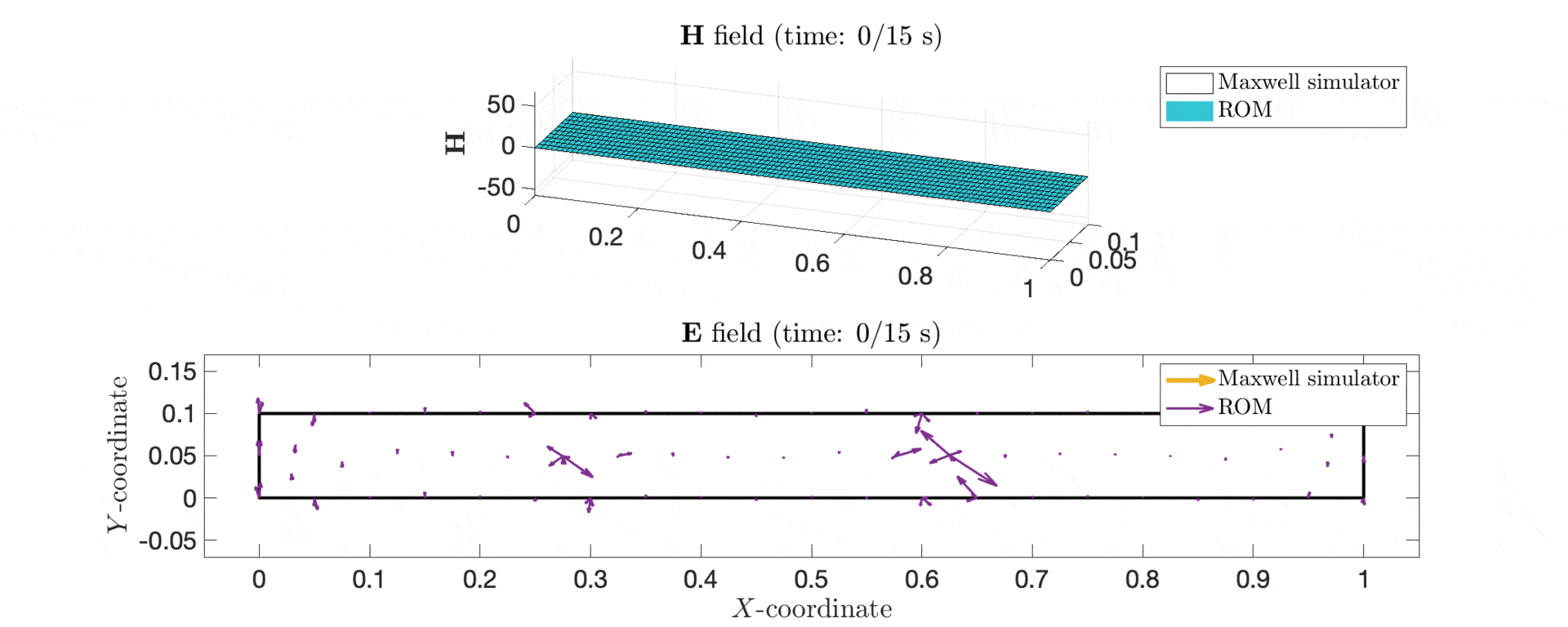

Engineers use the MDS suite to simplify the simulation of Maxwell equations
Model order reduction of a fluid mechanical dynamical
For intensive simulation, optimisation and control of fluidic phenomena, it can be interesting discretising and linearising the fluid partial differential equations, describing the impact of a given geometry subject to fluid flow.
Such a discretisation can then lead to a large number of ordinary differential equations (up to millions of states), which is then, from a numerical point of view, complicated to treat and to manage. In this context, the MDS suite can be used to approximate the dynamical model with a low order one, simpler but still very accurate.
Indeed, from a very-large set of equations, the MDS suite allows generating a state-space model of reduced dimension, which behaviour from inputs to outputs remains accurate, and without any need of original model simulation.
From a model with half-milion of states, the approximation is obtained in a bundle of minutes on a standard computer. This approximation allows physician researchers and engineers to realise multiple tasks such as optimisation of control law, stability analysis and to compute time-domain responses[IFAC LPVS].
[IFAC LPVS] C. Poussot-Vassal and D. Sipp, "Parametric reduced order dynamical model construction of a fluid flow control problem", in Proceedings of the Workshop on Linear Parameter Varying Systems (LPVS), Grenoble, France, October, 2015, pp. 133-138.

Engineers and researchers in fluid mechanics use the MDS suite to simplify the simulation and the analysis of these dynamical models
Civilian aircraft frequency limited model reduction, for vibration control
The civilian aircraft dynamical models are constructed by engineers, experts in flight mechanics, aero-elasticity, structure. These models are then used for different purpose such as simulation (of gust, loads, vibrations, ...), the analysis (of performances, NOx emissions...) or the control (of flight dynamics, loads, vibrations...).
In some cases, such as the vibrations control law synthesis, it is important to restitute the aircraft behaviour in a given frequency band, where the disturbances act (in this case, in low and medium frequencies). Indeed, reproducing the behaviour outside this frequency range of interest is useless and would be done at the price of larger complexity. The MDS suite allows specifying the frequency band of interest and to accurately reduce the model over this band.
From a large-scale state-space representation, the MDS suite allows contructing a reduced order model of reduced dimension, faithfull over the considered frequency range, defined by the user.
In the case of civilian aircraft, the approximation is obtained in only some seconds on a classical computer. This approximation allows then researchers and engineers, expert in control and aero-elasticity, to synthesize an anti-vibration controller, to analyse its stability, performances and robustness properties [Springer].
[Springer] C. Poussot-Vassal, C. Roos, P. Vuillemin, O. Cantinaud and J-P. Lacoste, Chapter 11: "Control-oriented Aeroelastic BizJet Low-order LFT modeling", in Control-oriented modelling and identification: theory and practice, M. Lovera Eds., January, 2015, IET - Control Engineering Series 80 (Hardcover)

Aeronautic engineers, specilized in control, use the MDS suite to simplify aero-elsatic models for control synthesis and control law optimisation
Model construction from ground vibration tests
In aeronotical applications, for certification purpose, test engineers realize a large amount to real experimental tests (both on ground and on flight). These tests aims at validating the dynamical models, control laws, theoretical results, and to enrich their knowledge of the aircraft behaviour. During these tests, the aircraft is solicitated and excited, and many measurements are collected.
In most of the cases, these tests record hundreds of sensor measurements, positionated at different location of the aircraft (wing and fuselage). From the excitation signals and the collected outputs measurements, described in the frequency-domain, the MOR toolbox allows constructing an exact or approximated model of the aicraft dynamics, in a few seconds (on a standard laptop).
In the context of ground vibration tests, this model approximation/construction did both permit the test engineers and experts in aero-elastical modelling to obtain in a few second, the dynamical model that reproduces the experimental test, and then to validate their modelling methodology and model knowledge, as well as the benefit brought by the control law. Moreover, the generated models are compatible with the standard modal analysis tools traditionnally used in aeronautics [IFASD].
[IFASD] C. Meyer, G. Broux, J. Prodigue, O. Cantinaud and C. Poussot-Vassal, "Demonstration of innovative vibration control on a Falcon Business Jet", in Proceedings of the International Forum on Aeroelasticity and Structural Dynamics (IFASD), Como, Italy, June, 2017.

Aeroelastic engineers use the MDS suite to construct models from experimental ground vibration tests
Approximation of an hydro-electrical simulator
Hydro-electrical modelling is done by engineers specialized in fluid flow dynamics. In many cases, this modelling can be done using a dedicated simulator, which takes into account many different dynamics, usually complicated to isolate.
These simulators can produce responses to input sollicitations. Based on these signals and the outputs measurements, one can use the MDS suite to construct an exact (or approximate) model of the channel, even if this latter is represented by complex and irrational functions.
In the context of hydro-electrical channels, this model approximation/construction allowed engineers obtaining models that are then utilisable by control specialists to design an output regulation controllers for the level and power regulation [ECC].
[ECC] V. Dalmas, G. Robert, C. Poussot-Vassal, I. Pontes Duff and C. Seren, "From infinite dimensional modelling to parametric reduced order approximation: Application to open-channel flow for hydroelectricity", in Proceedings of the European Control Conference (ECC), Aalborg, Denmark, July, 2016, pp. 1982-1987.

Hydrolic engineers use the MDS suite to simplify the models contained in their complex simulators
Nonlinear reduced order models of a pollutant dispersion simulator
Pollutants simulators allowing to predict their dispersion over a given area involve powerful computational means where complex phenomena, such as fluids, chemistry, etc. are modelled. For each given climate conditions, this dispersion in the atmosphere must be computed through this complex and computationaly costly simulator, limiting its extensive use.
The MDS suite may be used to approximate simulators with a dynamical model with simple complexity. The latter can then be used by engineers to re-run simulations with different initial conditions, optimise Kalman estimators, etc.
The figures below present the relative mismatch error in percentage, between the original data obtained from the high fidelity simulator and the obtained reduced order model obtained by the MDS suite (left, mismatch with a linear model, and right, with a linear and quadratic one).
Both models lead to less than 5% of mismatch error.
Original data are obtained with 7500 hours of computation time, while the construction of the reduced order model models is performed in 3 hours and their simulation time is of 1 seconds [arXiv].

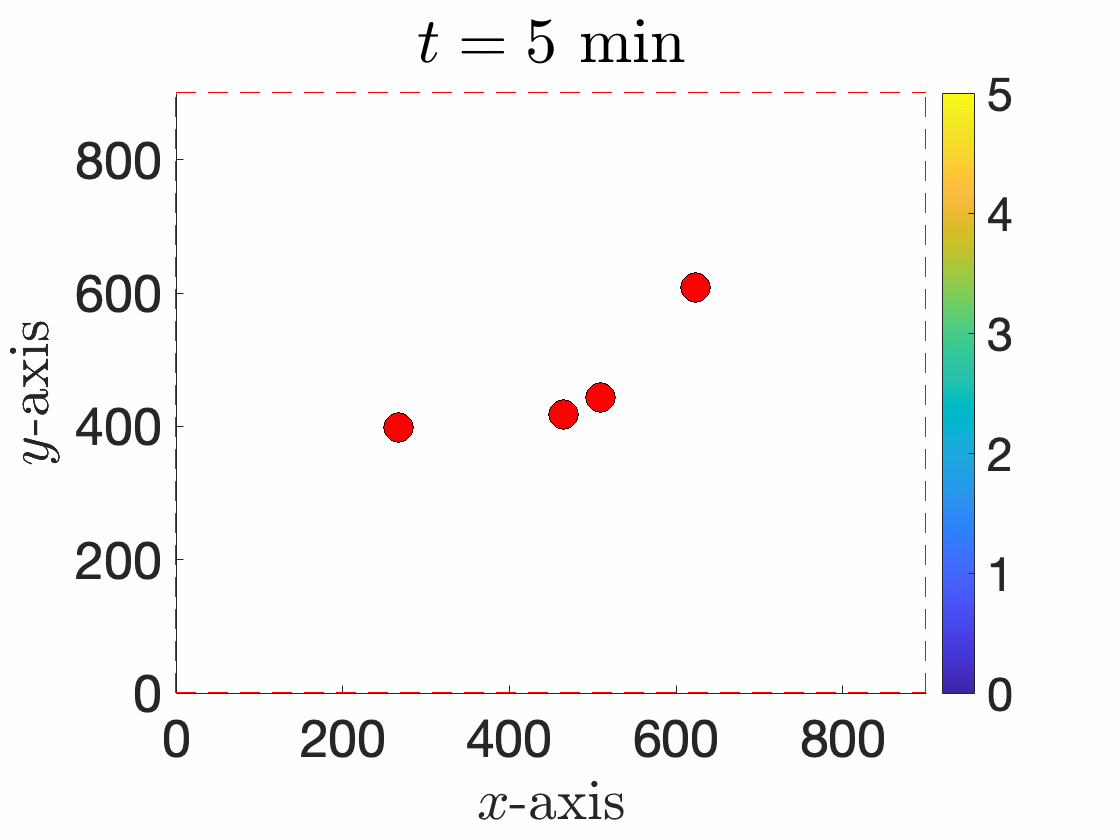
[arXiv] C. Poussot-Vassal, T. Sabatier, C. Sarrat and P. Vuillemin, "Mixed interpolatory and inference non-intrusive reduced order modeling with application to pollutants dispersion".
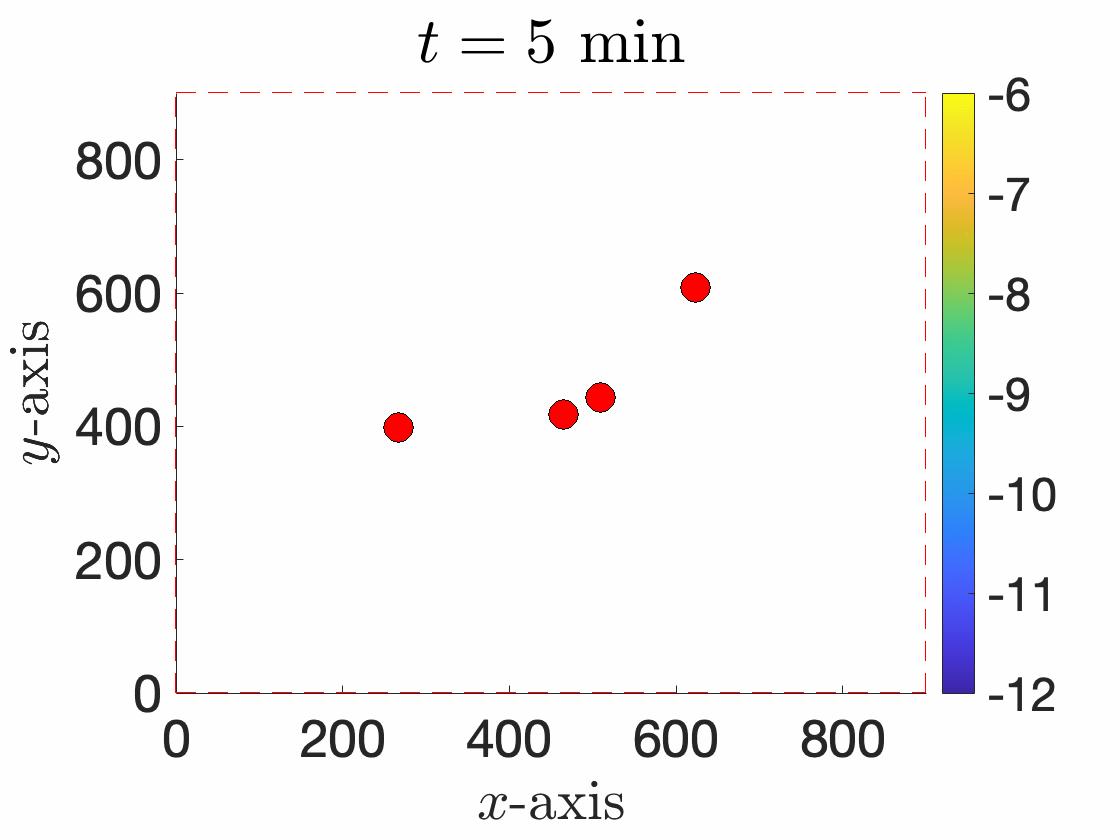
Engineers use the MDS suite to analyse the pollutants plume dispersion in urban zones
Zeros approximation of the Riemann "zeta" function
The Riemann "zeta" function is an irrational complex function which zeros allow approximating the (discrete) prime counting function. The Riemann hypothesis is an elegant maner to bridge the numer theory with the complex functions one.
The MDS suite may be used to approximate this "zeta" function with a rational one which zeros estimate the exact ones.
From a general viewpoint, researchers and engineers may use the MDS suite to approximate any complex-valued function with a rational one of finite dimension, simpler to interpret and to analyse. In the context of this function, the estimated zeros allowed to recover the prime counting function shape with a very high acuracy[CCS].
[CCS] C. Poussot-Vassal, I.V. Gosea, P. Vuillemin and A.C. Antoulas, "Identifying the non-trivial zeros of the Riemann zeta function for prime counting function approximation in the Loewner framework", 10th International Conference on Curves and Surfaces, Arcachon, France, June, 2022.
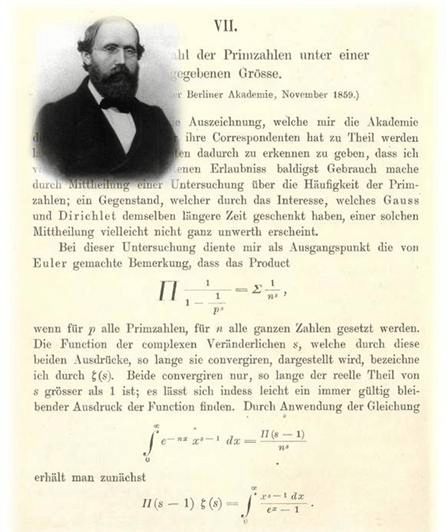
The MDS suite allows researcher to approximate the complex zeros of the "zeta" function, or any other!